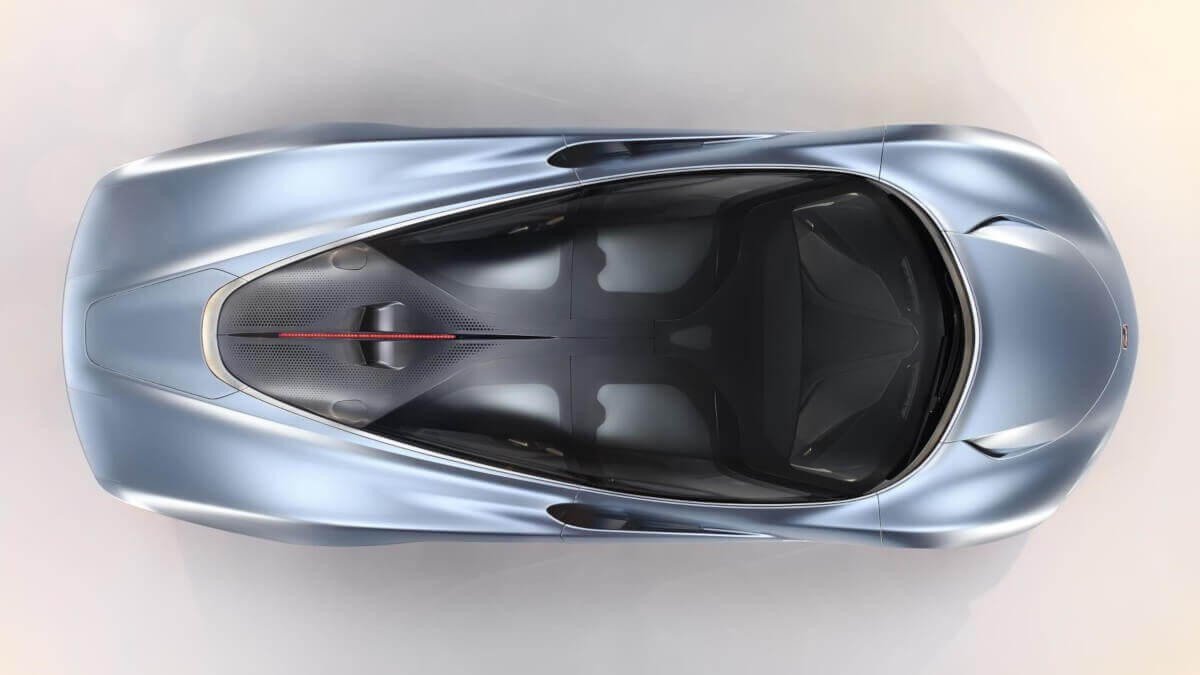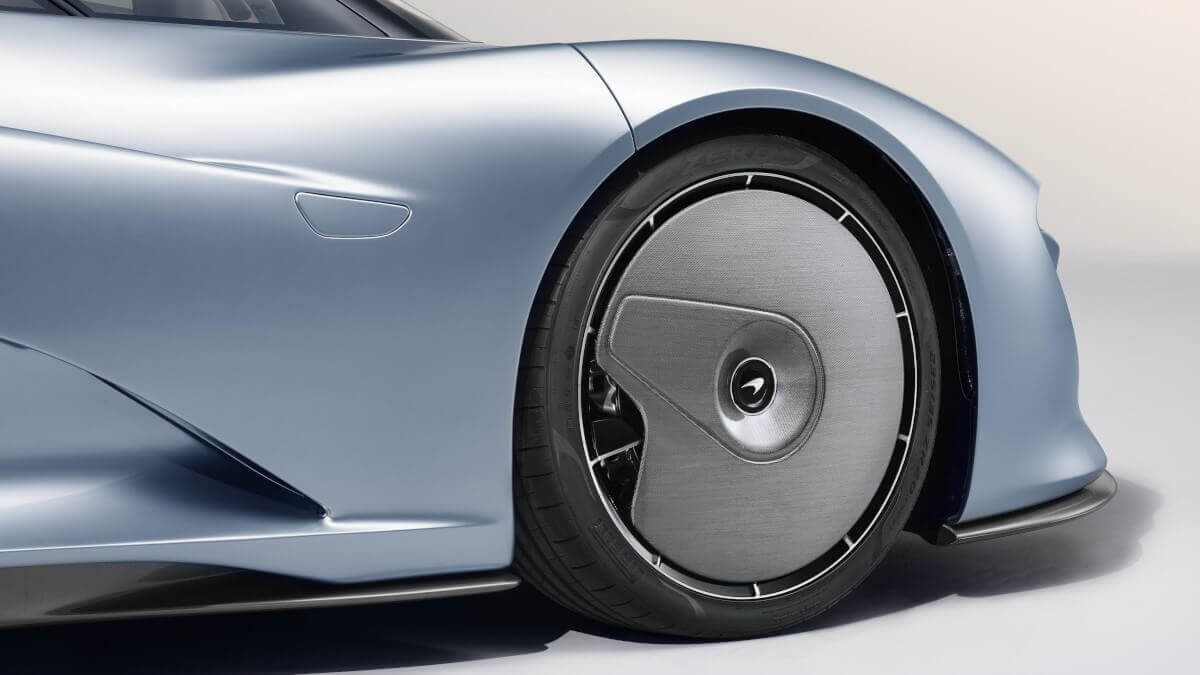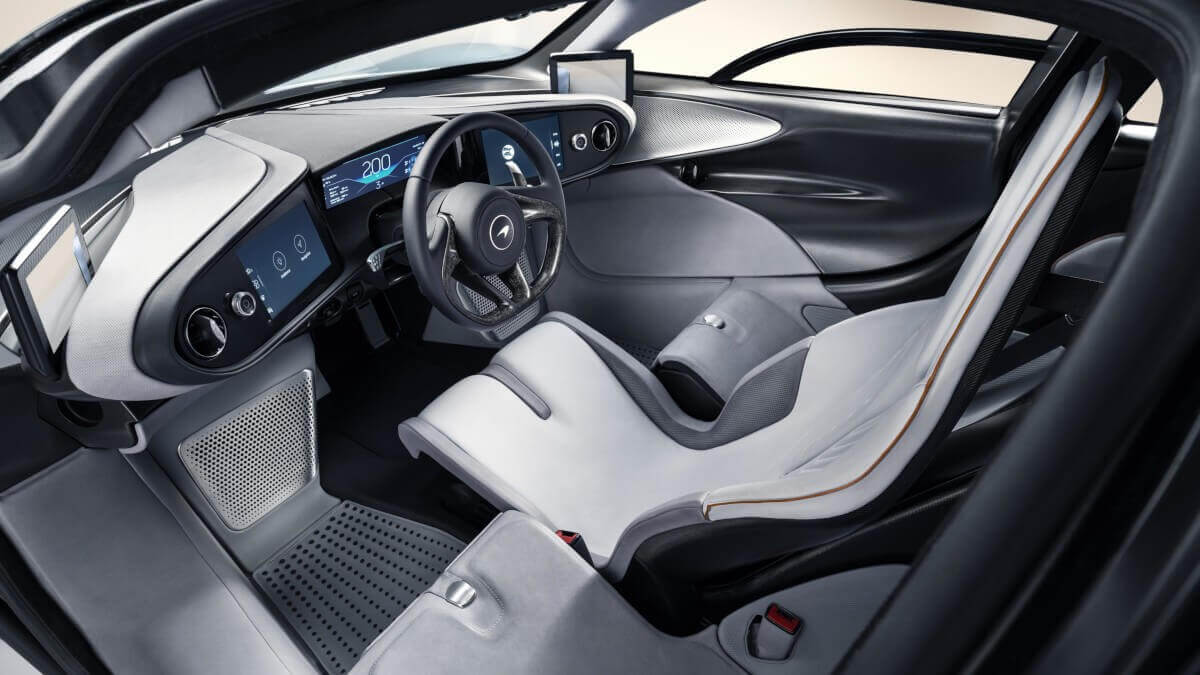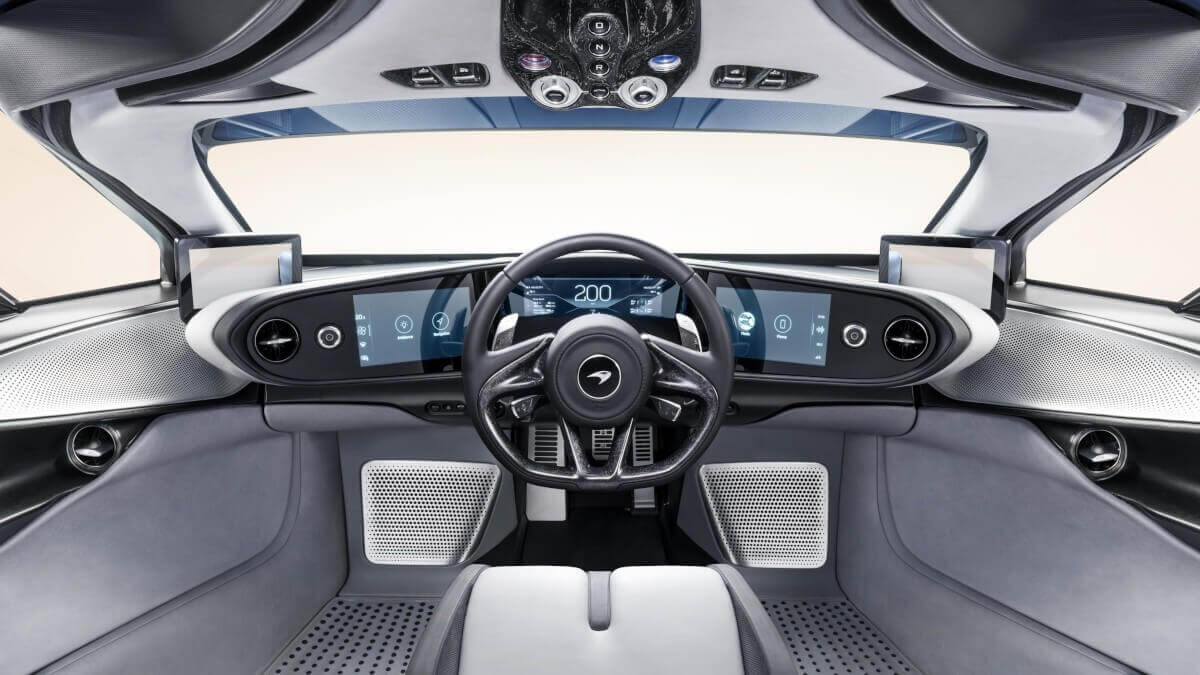McLaren Speedtail
The McLaren sports car range is divided into the three levels ‘Sports Series’, ‘Super Series’ and ‘Ultimate Series’. The latter includes only the absolute supercars like the P1 or the Senna. In early 2020 another vehicle will be added to this list, which was originally developed under the abbreviation BP23 and has now been presented with the name Speedtail. Analogous to the legendary McLaren F1 of the 1990s, only 106 copies are produced, that were sold out even before the first VIP premiere took place in London about a week ago. Each Speedtail is priced at 1.75 million pounds plus taxes. It is the first of 18 new models and derivatives that McLaren announced in their Track25 business plan. For some body panels McLaren uses a new, patented weaving technique in which carbon fibers and titanium fibers are woven into ‘Titan Deposition Carbon Fiber’. By melting a wafer-thin titanium layer onto the carbon, the strength is fully retained, while at the same time a special visible carbon with a chrome effect sheen is created. It can be anodized in any desired color and also be used for special interwoven images, symbols or words.
As with the P1, McLaren also uses a combination of an internal combustion engine, their well-known V8 biturbo engine, with electric motors for the Speedtail. The hybrid drive has 1,050 hp system performance and ensures a topspeed of 403 kph (250 mph). Thus, the new supercar surpasses even the F1, which reached 391 kph (243 mph) in 1998. To achieve this topspeed, McLaren developed the new Velocity mode, in which the HV batteries are fully charged by higher engine revs, thus providing their full performance. In addition, the digital reversing cameras drive in on the sides of the vehicle and the chassis lowers by 35 millimeters to improve air resistance. At the rear sit patented, active ailerons, which are completely flush sunk in the body in this mode. When braking, these panels also work as an air-brake. In fact, the outer skin of flexible carbon fiber is moving without visible hinges, attachment points or gaps, as otherwise mounted for active aerodynamic parts on other sports cars. While the McLaren P1 took 16.5 seconds to complete the sprint from zero to 300 kph (186 mph), the Speedtail needs for the same excercise just 12.8 seconds. Together with Pirelli they developed a special compound for the P-Zero tires, which are tuned to the acceleration and topspeed of the Speedtail.




































Inside the Speedtail the driver sits in central position as in the legendary F1, while left and right of him, a bit offset to the rear, two passengers can come along on the journey. High-resolution displays on the sides reproduce the images of the reversing cameras, while the actual cockpit also works with three big screens. Two of them are touch screen displays, on which the driver can control every comfort and infotainment functions of the car. Only the start button, the window openers, the door openers, the gear selector buttons and the Active Dynamics Panel sit on the headliner. The luggage of all three people can be accommodated in a tailor-made luggage set in two trunks at the front and at the rear of the car. Leather, Alcantara, carbon fiber and metal can be individually color-coordinated by the 106 new owners. In addition to fine aniline leather, on request a new very light leather is used. While the demonstration car shines in ‘Speedtail Silver’, a specially developed nano-metallic paint, customers can of course choose from the wide range of colors of McLaren or even suggest their own colors.
Radical lightweight construction results in a dry weight of only 1,430 kilograms, despite the hybrid technology. Added to this is the extremely minimalistic design, in which all disruptive elements were consistently avoided. Therefore, the Speedtail also has the already mentioned extendable rear view cameras instead of rear-view mirrors. The front wheels are clad with static aero covers to guide the wind more effectively around the wheel arches and avoid turbulences. Even the roof vent for the V8 engine’s fresh air intake is designed to not increase air resistance. Compared to the P1 it is noticeable that the Speedtail is narrower, but at 5,137 millimeters also about half a meter longer. It remains exciting how many copies of the Speedtail will actually participate in traffic after delivery.
Images: McLaren




